ERS statement: a core outcome set for clinical trials evaluating the management of COPD exacerbations
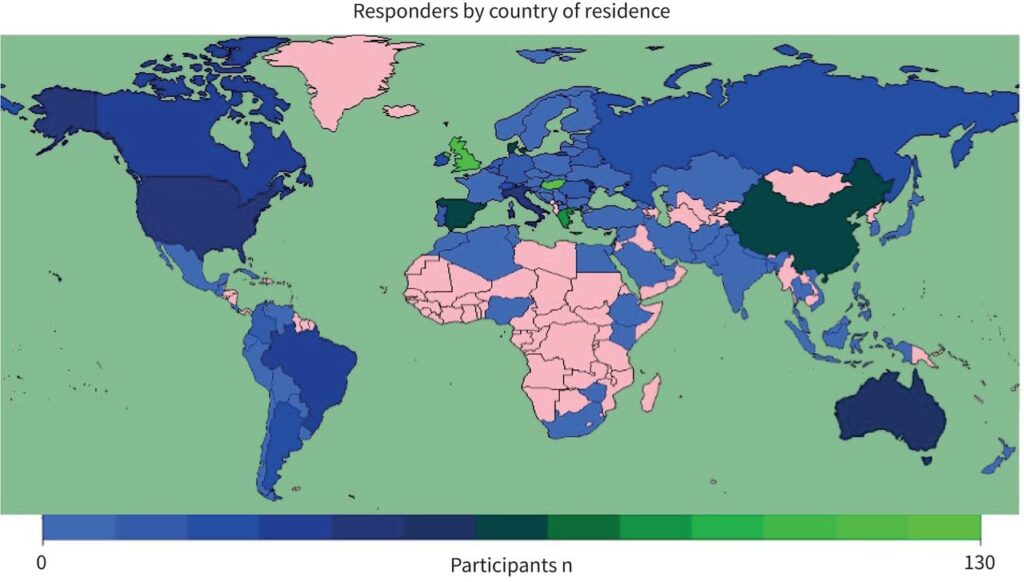
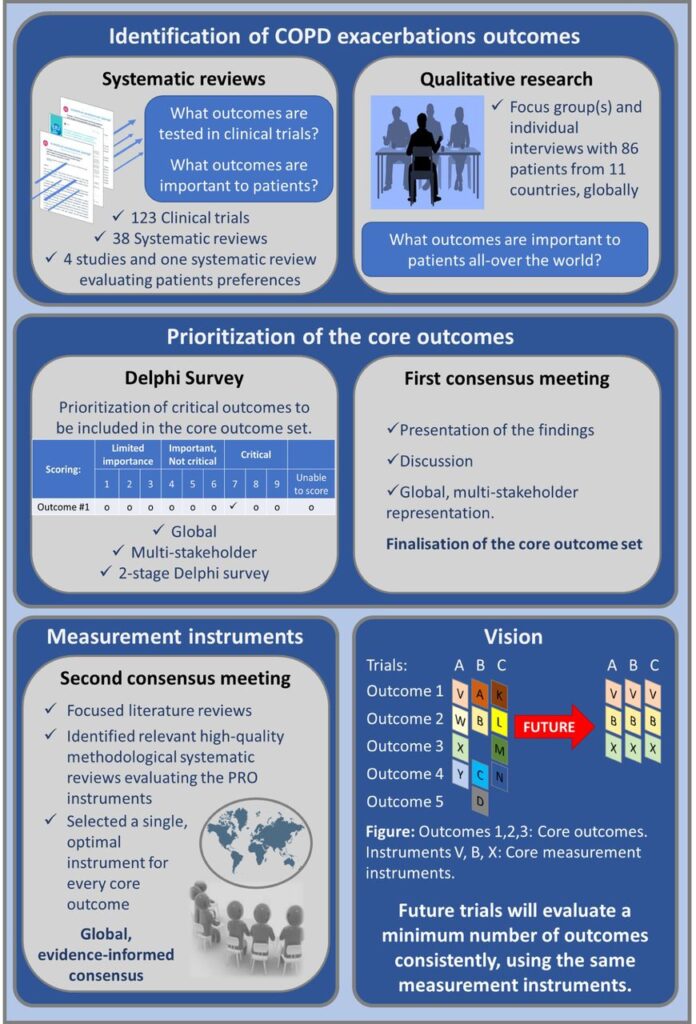
Clinical trials evaluating the management of acute exacerbations of COPD assess heterogeneous outcomes, often omitting those that are clinically relevant or more important to patients. We have developed a core outcome set, a consensus-based minimum set of important outcomes that we recommend are evaluated in all future clinical trials on exacerbations management, to improve their quality and comparability. COPD exacerbations outcomes were identified through methodological systematic reviews and qualitative interviews with 86 patients from 11 countries globally. The most critical outcomes were prioritised for inclusion in the core outcome set through a two-round Delphi survey completed by 1063 participants (256 patients, 488 health professionals and 319 clinical academics) from 88 countries in five continents. Two global, multi-stakeholder, virtual consensus meetings were conducted to 1) finalise the core outcome set and 2) prioritise a single measurement instrument to be used for evaluating each of the prioritised outcomes. Consensus was informed by rigorous methodological systematic reviews. The views of patients with COPD were accounted for at all stages of the project. Survival, treatment success, breathlessness, quality of life, activities of daily living, the need for a higher level of care, arterial blood gases, disease progression, future exacerbations and hospital admissions, treatment safety and adherence were all included in the core outcome set. Focused methodological research was recommended to further validate and optimise some of the selected measurement instruments. The panel did not consider the prioritised set of outcomes and associated measurement instruments to be burdensome for patients and health professionals to use.
Puedes leer el artículo completo aquí: https://erj.ersjournals.com/content/59/5/2102006
Noticias relacionadas
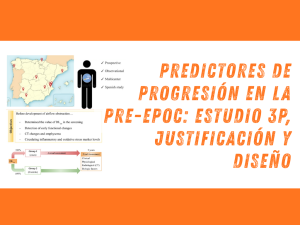
Predictores de progresión en la pre-EPOC: estudio 3P, justificación y diseño
Conoce el estudio 3P que analiza los factores que predicen la progresión de la pre-EPOC a EPOC en fumadores con espirometría normal.
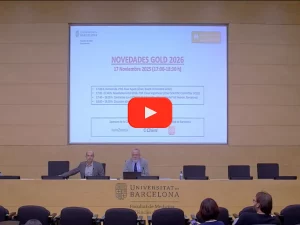
Vídeo de la Presentación de las Novedades GOLD 2026
Video de la presentación «Novedades GOLD 2026», en el que se trataron, entre otros aspectos: cambios en diagnóstico de la EPOC, tratamiento, comparativa con GESEPOC, etc.
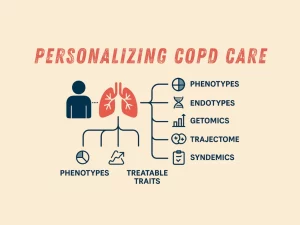
Personalizing COPD care: phenotypes, endotypes, GETomics, the the trajectome, syndemics and treatable traits
Discover how personalized COPD care integrates phenotypes, endotypes, GETomics, trajectome, syndemics, and treatable traits to improve patient outcomes.
Más artículos
EPOC
- 759788·Alvar Agustí, Rod Hughes, Eleni Rapsomaki, Barry Make, Ricardo Del Olmo, Alberto Papi, David Price, Laura Benton, Stefan Franzen, Jørgen Vestbo, Hana Mullerova – The many faces of COPD in real life: a longitudinal analysis of the NOVELTY cohort
- 759883·Alberto Papi, Rosa Faner, Ian Pavord, Federico Baraldi, Vanessa M McDonald, Mike Thomas, Marc Miravitlles, Nicholas Roche, Alvar Agustí. – From treatable traits to GETomics in airway disease: moving towards clinical practice
- 768778·Alvar Agusti, Claus F. Vogelmeier – GOLD 2024: a brief overview of key changes
- 768799·Surya P Bhatt Richard Casaburi Alvar Agusti et Al. Chronic obstructive pulmonary disease: hiding in plain sight, a Statement from the COPD Foundation Medical and Scientific Advisory Committee
- 769092·Leonardo M Fabbri et al. COPD and multimorbidity: recognising and addressing a syndemic occurrence
Recuerda que puedes acceder a varios enlaces a artículos dentro de la categoría EPOC en esta web. También puedes acceder otros enlaces en el Listado de Artículos de la Cátedra de Salud Respiratoria.
Imágenes obtenidas en el artículo original.
